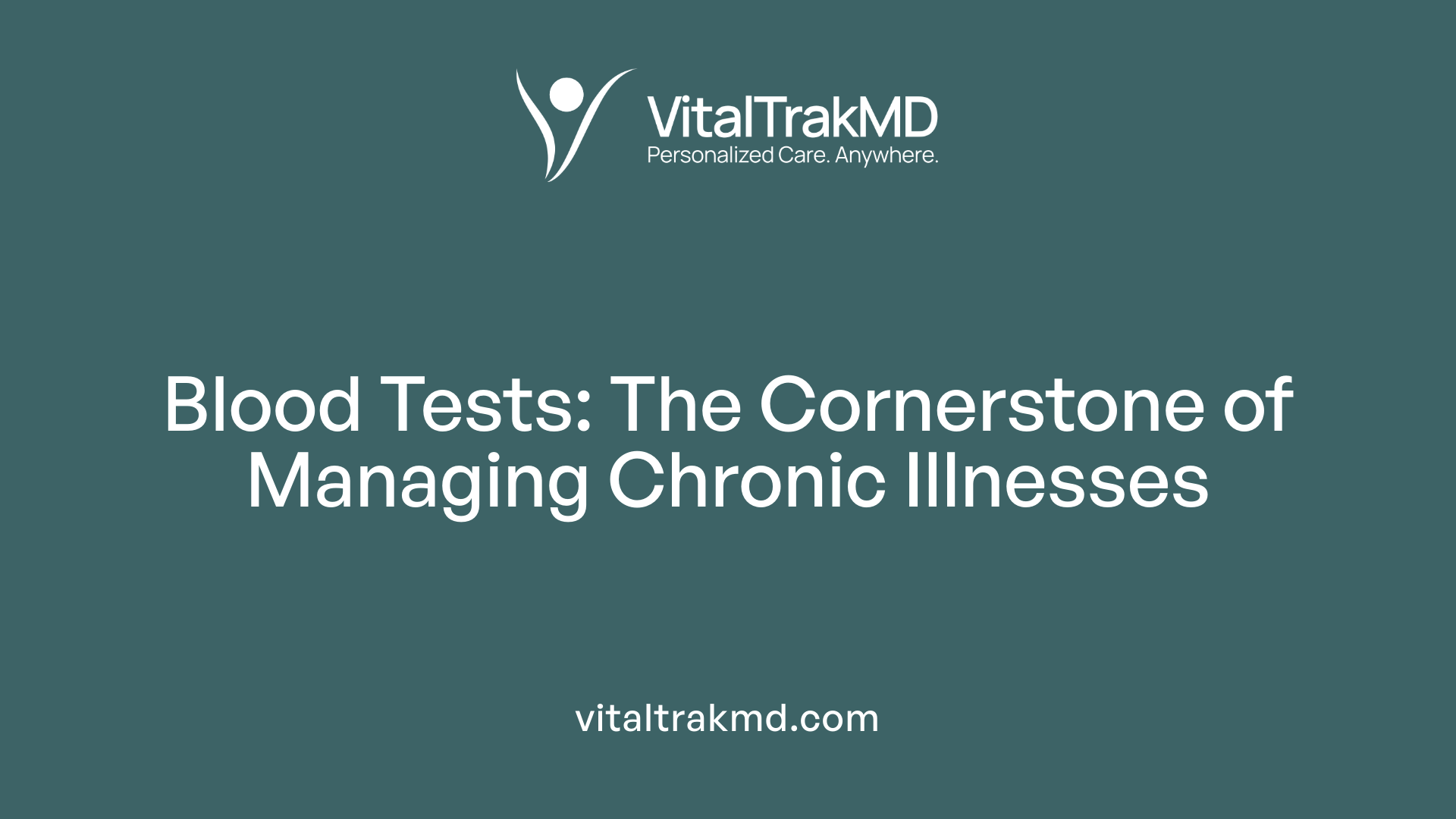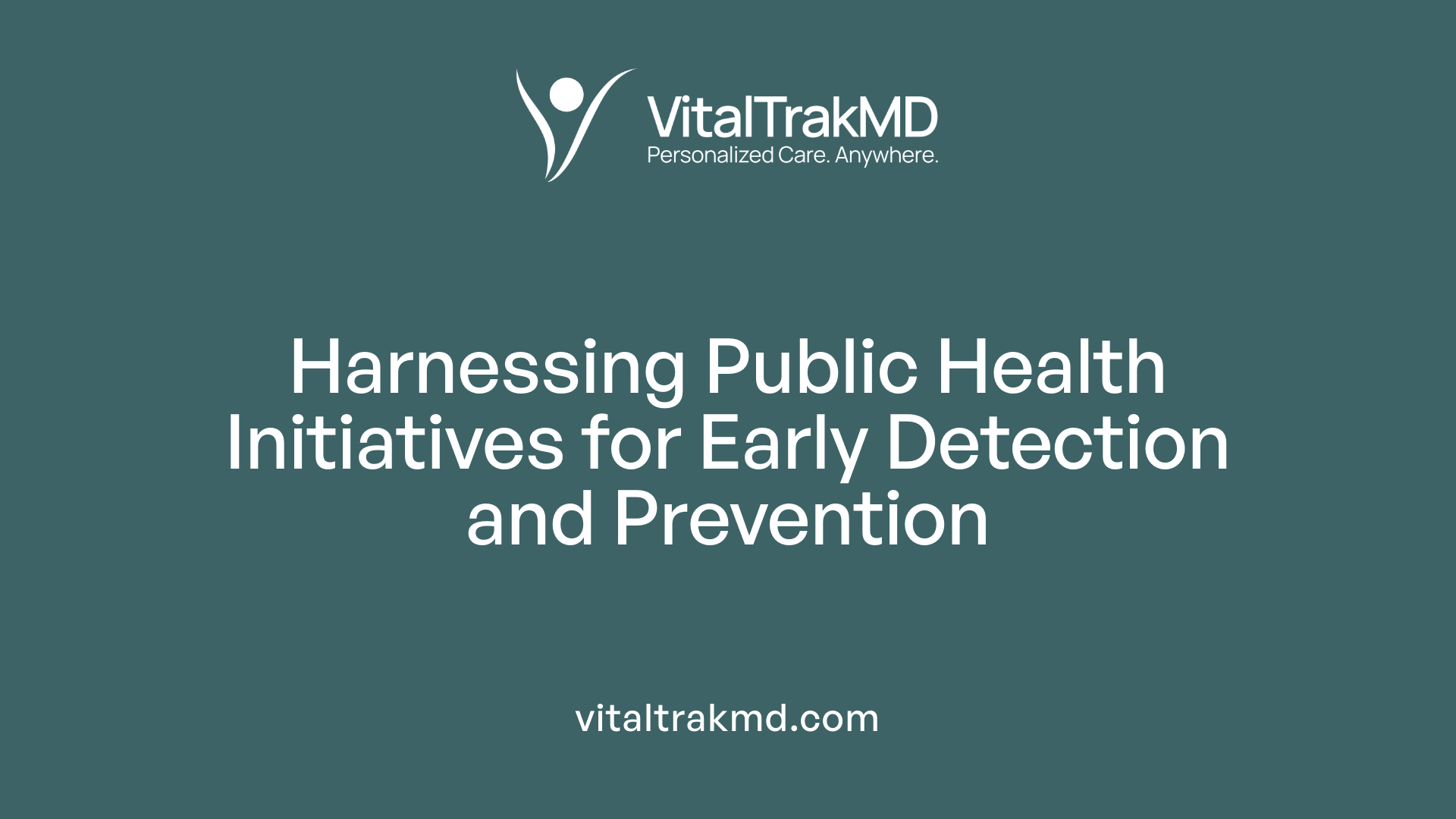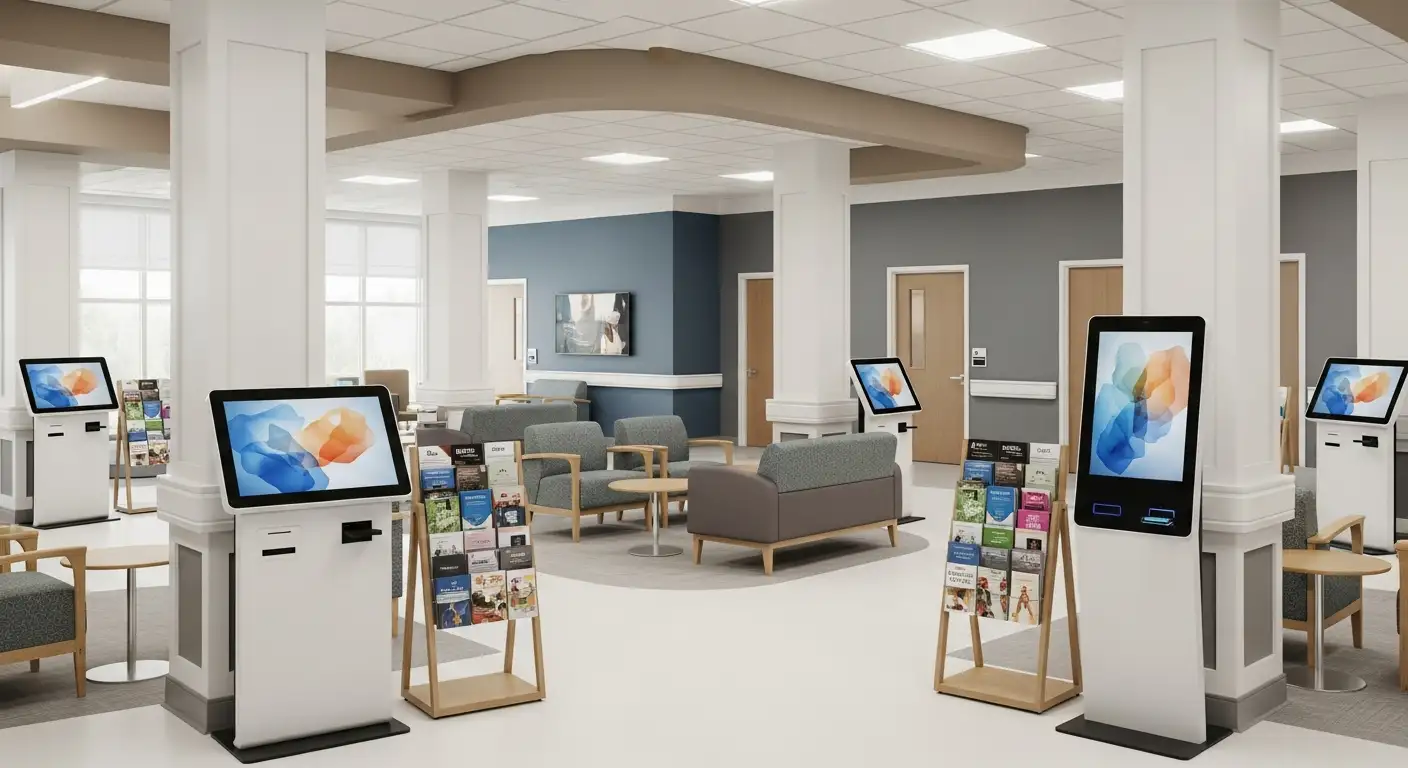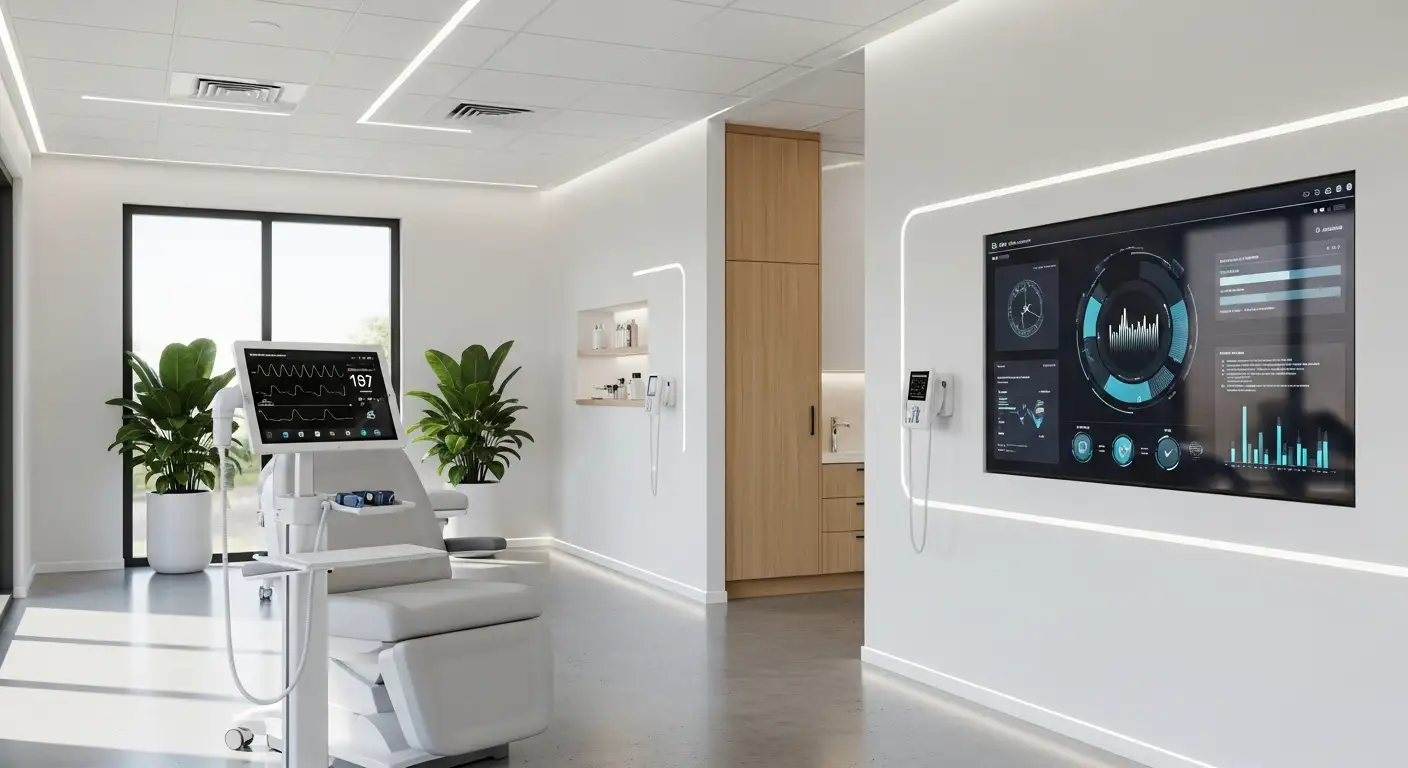The Silent Danger of Skipping Lab Work in Chronic Care

Understanding the Critical Role of Laboratory Tests in Long-term Health
Chronic diseases such as diabetes, hypertension, and kidney disease often develop gradually and silently, making routine laboratory testing an essential component of effective management and prevention. Skipping or neglecting these vital health checks can lead to misdiagnoses, delayed treatments, and severe health complications. This article explores the importance of regular lab work, the risks associated with missed tests, and strategies to improve adherence, ultimately safeguarding long-term health.
The Importance of Blood and Laboratory Tests in Managing Chronic Conditions

What is the importance of blood and laboratory tests in managing chronic health conditions?
Blood and laboratory tests play a vital role in managing chronic diseases such as diabetes, heart disease, thyroid disorders, and chronic kidney disease. These tests provide healthcare professionals with essential insights into a patient’s internal health and help track the course of disease.
Routine blood work helps detect early signs of worsening health or potential complications before symptoms appear. For instance, an HbA1c test measures long-term blood sugar control, guiding diabetes management to prevent nerve damage, eye problems, and kidney issues.
Similarly, lipid profiles assess cholesterol and triglyceride levels, which are crucial for evaluating cardiovascular risk. Tests like serum creatinine and estimated glomerular filtration rate (eGFR) track kidney function, crucial for early detection of kidney damage, especially in patients with diabetes or hypertension.
The frequency of these tests varies based on the severity and type of the condition. Some patients require monthly checks, while others are tested quarterly or biannually. Consistent testing ensures treatment strategies remain effective and tailored to individual needs.
Beyond disease management, blood tests also serve a preventive role. They can identify markers for diseases early, leading to interventions that can curb progression or prevent onset altogether.
Importantly, blood testing enhances patient awareness. When individuals understand their health status and how their lifestyle or medications influence these markers, they are more empowered to make informed decisions and adhere to treatment plans.
Systematic testing protocols, combined with technological advancements like electronic result alerts and integrated health records, have improved test result follow-ups. This reduces the risk of missed diagnoses that could delay necessary treatment.
Overall, regular blood and laboratory tests are indispensable for managing chronic health conditions effectively. They help in early detection, personalized treatment adjustments, and motivate patients to engage actively in their health journey.
Risks of Skipping or Neglecting Lab Work
 Neglecting regular laboratory tests in managing chronic diseases poses significant health risks. When patients skip or delay lab work, there is a higher chance that serious health issues may go undiagnosed or untreated until they become severe. For example, conditions like diabetes, high cholesterol, and kidney disease often develop silently without obvious symptoms. Without timely blood tests such as HbA1c, lipid profiles, or urine albumin measurements, these conditions can progress unchecked.
Neglecting regular laboratory tests in managing chronic diseases poses significant health risks. When patients skip or delay lab work, there is a higher chance that serious health issues may go undiagnosed or untreated until they become severe. For example, conditions like diabetes, high cholesterol, and kidney disease often develop silently without obvious symptoms. Without timely blood tests such as HbA1c, lipid profiles, or urine albumin measurements, these conditions can progress unchecked.
This gap in testing can lead to complications, including heart attacks, strokes, organ damage, and even death. For instance, untreated high blood pressure or elevated blood sugar levels can cause blood vessel damage, increasing the likelihood of cardiovascular events and kidney failure.
Furthermore, lacking lab data hampers healthcare providers' ability to make accurate treatment decisions. It increases the risk of errors, such as misdiagnosis or inadequate medication adjustments, which might stem from incomplete information. Failures in following up on submitted test results are linked to delayed diagnoses of serious conditions like cancers or metabolic disorders.
Overall, ignoring essential lab work undermines disease management, elevates healthcare costs, and puts patients at unnecessary risk for adverse health outcomes. Consistent testing and timely follow-up are vital components to ensure early detection, effective treatment, and prevention of potentially life-threatening complications.
The Consequences of Delayed Diagnosis and Monitoring
 When important blood tests are skipped or delayed, the impact on health can be serious and far-reaching.
When important blood tests are skipped or delayed, the impact on health can be serious and far-reaching.
Without regular monitoring through lab work, chronic conditions such as diabetes, heart disease, and kidney disease can worsen unchecked. For example, unmanaged high blood pressure or glucose levels often lead to irreversible damage like heart attacks, strokes, or kidney failure.
Delays in diagnosis allow diseases like cancer and thyroid disorders to progress to advanced stages, making treatment more difficult and less effective. In these cases, late detection often means patients face more aggressive therapies, longer recoveries, and decreased chances of survival.
The financial burden is also significant. More complex and intensive treatments increase healthcare costs for patients and the system. Hospital stays, surgeries, and long-term care become more necessary, often at a much higher expense.
Studies show that neglecting lab work can result in worse health outcomes overall. When diseases are caught early, treatment is simpler, and survival rates improve.
In summary, not performing timely blood tests diminishes the ability to manage diseases effectively, leading to more severe health problems, unnecessary suffering, and higher costs for individuals and society alike.
| Aspect | Impact | Explanation |
|---|---|---|
| Disease Progression | Increased severity | Delay allows disease to advance to more damaging stages |
| Complexity | More complicated health issues | Late diagnosis often results in advanced, harder-to-treat conditions |
| Healthcare Costs | Higher expenses | Advanced treatments and hospital stays are more costly |
From missed early detection of silent conditions to the risk of organ failure, neglecting routine blood work can have devastating consequences. Regular monitoring is essential for avoiding these outcomes and ensuring better health and cost savings.
Detecting Silent Diseases Early Through Laboratory Testing

How does laboratory testing help in detecting silent, asymptomatic diseases early enough for effective intervention?
Laboratory testing plays a vital role in uncovering hidden health issues before they manifest symptoms. Many chronic and serious conditions, such as kidney disease, diabetes, and cardiovascular diseases, often develop silently. Routine blood and urine tests can reveal abnormal markers—like elevated blood glucose, cholesterol levels, or early signs of kidney damage—that indicate disease onset.
Technological advancements have introduced new biomarkers and screening techniques that improve early detection. For example, blood tests measuring lipoprotein(a) and C-reactive protein can predict long-term heart disease risk even in individuals without symptoms. Similarly, urine albumin-to-creatinine ratio (ACR) identifies early kidney damage in high-risk populations such as diabetics and hypertensives.
Large research efforts, including those by the Walter and Eliza Hall Institute (WEHI), focus on discovering novel biomarkers with higher sensitivity and specificity. These discoveries enable healthcare providers to diagnose conditions at a much earlier stage, increasing the chances of successful intervention.
Screening tests like lipid profiles, blood pressure assessments, and imaging—such as mammograms or colonoscopies—are vital tools for early detection. Coupled with advances in genetic and molecular testing, laboratory diagnostics are continuously improving their ability to identify diseases before symptoms appear.
Overall, early detection through lab testing supports proactive healthcare, allowing timely treatment that can prevent severe outcomes, reduce healthcare costs, and improve quality of life. This preventive approach underscores the importance of systematic screening and research in fighting silent, insidious diseases.
The Role of Preventive and Population Health Initiatives
 Regular health screenings and check-ups form the cornerstone of early detection and prevention of chronic illnesses. Blood pressure, cholesterol levels, and blood glucose tests can reveal silent conditions like hypertension, hyperlipidemia, and diabetes before symptoms appear, enabling timely interventions that can prevent serious complications such as strokes, heart attacks, and kidney disease.
Regular health screenings and check-ups form the cornerstone of early detection and prevention of chronic illnesses. Blood pressure, cholesterol levels, and blood glucose tests can reveal silent conditions like hypertension, hyperlipidemia, and diabetes before symptoms appear, enabling timely interventions that can prevent serious complications such as strokes, heart attacks, and kidney disease.
Cancer screenings, including mammograms, Pap smears, and colonoscopies, help detect malignancies early when treatment is most effective. Vaccinations and health education during routine visits reinforce protection against infectious diseases, ultimately supporting healthier lifestyles.
Population health initiatives play a crucial role in scaling these screening efforts. Programs like those led by the Population Health Lab (PHL) collaborate with clinicians and health systems to develop sustainable interventions. These initiatives utilize pragmatic trials and innovative strategies, including behavioral economics techniques like peer comparison feedback and opt-out framing, to improve screening adherence at a community level.
By integrating such approaches within existing healthcare infrastructures, these programs help identify risk factors early, reduce long-term healthcare costs, and improve population outcomes. The efforts of PHL and similar entities thus bridge individual care with broader public health objectives.
| Aspect | Approach | Outcome |
|---|---|---|
| Community-based screening | Organized outreach programs | Increased early detection |
| Population health programs | Use of pragmatic RCTs | High-quality evidence to guide policies |
| Behavioral economic strategies | Framing, feedback, nudges | Better screening compliance |
| Challenges | Variable testing rates and undertesting | Need for system integration and patient engagement |
These combined efforts ensure that more individuals benefit from early diagnosis and preventive care, helping to decline the incidence and impact of chronic diseases across communities.
Enhancing Result Management and Patient Safety
 Improving the management of medical test results is crucial for patient safety and effective healthcare delivery. One of the most impactful strategies is leveraging information technology (IT). Advanced electronic systems enable healthcare providers to track pending results, send automated alerts when results are received, document subsequent actions, and maintain comprehensive audit trails. This technology ensures that no critical information is overlooked and that tests are followed up promptly, reducing errors and delays.
Improving the management of medical test results is crucial for patient safety and effective healthcare delivery. One of the most impactful strategies is leveraging information technology (IT). Advanced electronic systems enable healthcare providers to track pending results, send automated alerts when results are received, document subsequent actions, and maintain comprehensive audit trails. This technology ensures that no critical information is overlooked and that tests are followed up promptly, reducing errors and delays.
Clear communication within healthcare teams is essential. Well-defined responsibilities and consistent communication policies help ensure everyone understands who is responsible for reviewing and acting on test results, preventing miscommunication and missed diagnoses. Integration of systems such as electronic health records (EHRs) allows for seamless sharing of information across departments, making it easier to access and interpret results.
Patient portals also play a vital role by promoting transparency. These platforms enable patients to view their test results directly, understand their health status, and engage in shared decision-making about their care. Access to personal health data encourages patients to follow through with recommended treatment or additional testing.
Hospitals and clinics have adopted escalation protocols within electronic test management systems. When results are pending beyond expected timeframes or if abnormal findings are detected, alerts are automatically triggered, prompting timely review by healthcare professionals.
All these strategies combined contribute to a safer healthcare environment. They help prevent adverse events caused by missed or unacknowledged test results, streamline workflow, and improve the overall quality of care. Emphasizing technology integration, responsibility clarity, and patient involvement creates a robust framework for managing medical data effectively.
The Impact of Physical Examination in Chronic Disease Detection

What is the role of physical examination in detecting chronic diseases, and what are the implications of its decline?
Physical examination has long been a cornerstone in diagnosing and managing chronic illnesses. It offers an objective measure of health status, allowing clinicians to detect signs that might not be apparent through patient history alone. For example, listening to heart and lung sounds can reveal early heart failure, examining skin lesions can uncover melanoma, and checking for swelling can indicate fluid retention related to kidney or cardiac issues.
These examinations help reframe the patient's narrative—turning their symptoms into observable signs—and can sometimes uncover unanticipated findings that guide further testing or immediate intervention. This direct approach provides reassurance to patients and confidence to clinicians, fostering trust and accurate diagnosis.
However, the increasing reliance on telehealth has led to a decline in routine physical examinations. As a result, there is concern about the potential for missed early detections of conditions like hypertension, skin cancers, or neurological signs, which often depend on physical cues.
This shift has also caused emotional and professional insecurity among physicians who value the tactile and observational aspects of care. Despite these challenges, telehealth introduces new possibilities. Virtual assessments can now include patient-supplied images, environmental observations, and the use of wearable devices that monitor vital signs in real time.
While some experts debate the necessity of physical exams, especially for less complex issues, integrating in-person evaluations with remote tools offers a balanced approach. For conditions requiring physical palpation or auscultation, in-person visits remain essential. Ultimately, combining traditional examination skills with innovative remote monitoring enhances early detection and chronic disease management.
A Call to Action for Better Care
The effectiveness of chronic disease management hinges on consistent, comprehensive laboratory testing and physical assessments. Recognizing the silent dangers of neglected lab work emphasizes the need for both healthcare providers and patients to prioritize routine screenings and follow-up. Embracing technological advancements and systemic improvements in result management can close gaps in care, prevent severe complications, and improve health outcomes. Ultimately, regular lab work is a powerful safeguard that turns silent risks into manageable health conditions, ensuring healthier lives for all.
References
- How Often Should You Get Blood Work Done? - Advance ER
- The Population Health Lab: Multiplying impact in preventive and ...
- Screening tests can prevent complications from untreated, silent ...
- The Impact for Patient Outcomes of Failure to Follow Up on Test ...
- Finding the Right Doctor for Chronic Care - Raleigh Medical Group
- Does Preventive Healthcare Really Matter?
- Variation in laboratory testing for patients with long-term conditions
- The Disappearance of the Primary Care Physical Examination ...
Recent articles
Want to Feel Better and Live Healthier?
Join hundreds of patients taking control of their health with personalized care that fits their life – not the other way around.
Rated 4.8/5 by 32+ customers







